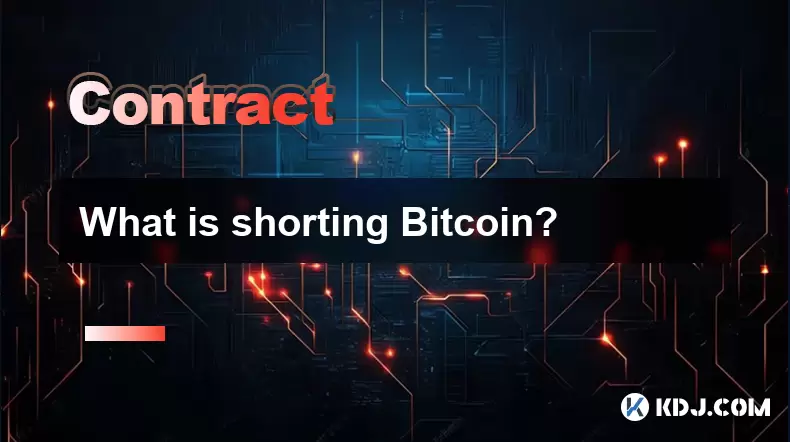-
 Bitcoin
Bitcoin $117800
0.05% -
 Ethereum
Ethereum $3542
-1.68% -
 XRP
XRP $3.435
-0.41% -
 Tether USDt
Tether USDt $1.000
-0.02% -
 BNB
BNB $729.1
-1.96% -
 Solana
Solana $176.7
-1.18% -
 USDC
USDC $0.9998
-0.04% -
 Dogecoin
Dogecoin $0.2404
0.34% -
 TRON
TRON $0.3191
-2.37% -
 Cardano
Cardano $0.8211
-1.29% -
 Hyperliquid
Hyperliquid $44.61
-0.16% -
 Stellar
Stellar $0.4655
-1.52% -
 Sui
Sui $3.773
-3.29% -
 Chainlink
Chainlink $18.02
-0.44% -
 Hedera
Hedera $0.2677
-0.17% -
 Bitcoin Cash
Bitcoin Cash $504.0
-2.79% -
 Avalanche
Avalanche $23.73
-1.25% -
 Shiba Inu
Shiba Inu $0.00001462
-2.09% -
 UNUS SED LEO
UNUS SED LEO $8.992
0.24% -
 Toncoin
Toncoin $3.161
-3.97% -
 Litecoin
Litecoin $101.4
-3.30% -
 Polkadot
Polkadot $4.231
-2.38% -
 Uniswap
Uniswap $9.994
-3.01% -
 Monero
Monero $326.8
0.04% -
 Ethena USDe
Ethena USDe $1.001
-0.04% -
 Bitget Token
Bitget Token $4.871
-1.71% -
 Pepe
Pepe $0.00001299
-3.36% -
 Dai
Dai $0.9999
0.00% -
 Aave
Aave $314.3
-2.82% -
 Cronos
Cronos $0.1209
-0.31%
What is shorting Bitcoin?
Shorting Bitcoin involves betting on its price decline by borrowing and selling it, then repurchasing at a lower price to profit.
Jul 19, 2025 at 08:48 pm

Understanding the Concept of Shorting Bitcoin
Shorting Bitcoin refers to the financial strategy where an investor bets on the price of Bitcoin going down. This is typically done by borrowing Bitcoin, selling it at the current market price, and then buying it back at a lower price in the future to return it, thereby profiting from the price decline. This concept is widely used in traditional markets and has been adopted in the cryptocurrency market as well.
Unlike holding Bitcoin in anticipation of price appreciation, shorting allows traders to benefit from falling prices. This method is particularly popular among speculators and hedge fund managers who aim to manage risks or capitalize on market volatility.
How to Short Bitcoin: Step-by-Step Guide
- Choose a platform that supports short selling: Not all exchanges or brokers allow shorting. You need to use platforms that offer margin trading, futures contracts, or CFDs (Contracts for Difference).
- Open a margin account: This requires verification and often a minimum deposit. Margin accounts allow you to borrow assets using your existing holdings as collateral.
- Borrow Bitcoin: Through the margin account, you can borrow Bitcoin from the platform or other users.
- Sell the borrowed Bitcoin immediately: This is done on the spot market at the current market price.
- Wait for the price to drop: Monitor the market closely. The goal is for Bitcoin’s price to fall below the price at which you sold it.
- Buy back Bitcoin at the lower price: Purchase the same amount of Bitcoin you borrowed.
- Return the borrowed Bitcoin: The difference between the selling price and the buying price is your profit (minus fees and interest).
It is crucial to understand the risks involved, as shorting can lead to significant losses if the price rises instead of falls.
Tools and Instruments for Shorting Bitcoin
Several financial instruments enable traders to short Bitcoin without directly borrowing the asset. These include:
- Bitcoin Futures Contracts: These are agreements to buy or sell Bitcoin at a predetermined price and date. Selling a futures contract allows you to profit if Bitcoin’s price drops.
- CFDs (Contracts for Difference): These are derivative instruments that let traders speculate on price movements without owning the underlying asset. Profits or losses are settled in cash.
- Inverse Exchange-Traded Funds (ETFs): These funds are designed to move in the opposite direction of Bitcoin’s price. However, they are not yet widely available in the cryptocurrency space.
- Options Trading: Put options allow you to sell Bitcoin at a set price, making them a tool for betting on price declines.
Each of these tools has unique features, fees, and risk profiles, so traders should carefully evaluate which one suits their strategy best.
Risks and Challenges of Shorting Bitcoin
While shorting Bitcoin can be profitable in a bear market, it comes with inherent risks that traders must understand:
- Unlimited loss potential: If the price of Bitcoin rises significantly, losses can exceed the initial investment.
- Margin calls: If the value of your collateral drops below a certain level, the broker may demand additional funds or liquidate your position.
- Volatility: Bitcoin is known for its price swings, which can lead to rapid and unexpected losses.
- Interest and fees: Borrowing Bitcoin or using leveraged products often incurs fees and interest charges that can eat into profits.
- Market manipulation: In some cases, large players or whale transactions can influence the price, making it difficult to predict movements.
Traders should implement risk management strategies such as stop-loss orders and position sizing to mitigate these dangers.
Real-World Examples of Shorting Bitcoin
To better understand how shorting works, consider the following scenario:
- Scenario: A trader believes Bitcoin will drop from $30,000 to $25,000 in the next month.
- Action: They borrow 1 Bitcoin and sell it at $30,000.
- Price drop: After two weeks, Bitcoin drops to $25,000.
- Buy back: The trader purchases 1 Bitcoin at $25,000 and returns it to the lender.
- Profit: The trader earns $5,000 (minus fees and interest).
Another example involves futures contracts:
- A trader sells a Bitcoin futures contract at $30,000 with a one-month expiry.
- At expiry, Bitcoin is trading at $27,000.
- The trader profits from the $3,000 price drop without ever owning Bitcoin.
These examples highlight how shorting can be executed in real trading scenarios.
Frequently Asked Questions (FAQs)
Q: Can I short Bitcoin without using leverage?
A: Yes, you can short Bitcoin using spot market strategies such as futures contracts or options, which do not always require leverage. However, many shorting strategies do involve some form of leverage to amplify potential gains (and losses).
Q: Is shorting Bitcoin legal?
A: Shorting Bitcoin is legal on platforms that offer such services and in jurisdictions where cryptocurrency trading is permitted. Always ensure compliance with local laws and platform-specific rules.
Q: How much does it cost to short Bitcoin?
A: Costs vary depending on the platform, the instrument used, and the duration of the trade. Fees may include borrowing fees, trading fees, and interest on leveraged positions. It’s important to review the fee schedule before initiating a trade.
Q: What happens if Bitcoin’s price rises after I short it?
A: If the price rises, your losses increase. In margin trading, this may trigger a margin call, requiring you to deposit more funds or risk having your position forcibly liquidated by the broker.
Disclaimer:info@kdj.com
The information provided is not trading advice. kdj.com does not assume any responsibility for any investments made based on the information provided in this article. Cryptocurrencies are highly volatile and it is highly recommended that you invest with caution after thorough research!
If you believe that the content used on this website infringes your copyright, please contact us immediately (info@kdj.com) and we will delete it promptly.
- American Eagle Palladium Coin Set for September 4 Release: What to Expect
- 2025-07-20 00:35:12
- FloppyPepe: Could This Meme Coin Be Your Ticket to Crypto Millionaire Status with a 15,800% ROI?
- 2025-07-20 00:50:12
- Ethereum's 2025 ATH: Could These 20x Tokens Be Your Golden Ticket?
- 2025-07-20 00:35:12
- Solana, Altcoin Bets, and the Next Big Thing: What's the Play?
- 2025-07-20 01:15:12
- BlockDAG's NO VESTING PASS: A 2025 Crypto Game Changer?
- 2025-07-20 01:15:12
- Crypto Millionaires: Riding the Bull Market Wave
- 2025-07-20 01:15:13
Related knowledge

What is a maker vs a taker fee?
Jul 19,2025 at 01:14am
Understanding the Basics of Cryptocurrency Exchange FeesIn the world of cryptocurrency trading, maker vs taker fees are a fundamental concept that eve...

How to analyze Bitcoin futures data from CME?
Jul 19,2025 at 05:22pm
Understanding Bitcoin Futures on CMEBitcoin futures on the CME Group (Chicago Mercantile Exchange) represent a regulated financial instrument that all...

How to understand the liquidation price?
Jul 19,2025 at 10:00pm
What Is a Liquidation Price in Cryptocurrency Trading?In the realm of cryptocurrency futures and margin trading, the liquidation price refers to the s...

What is time in force (GTC, IOC, FOK)?
Jul 19,2025 at 08:57am
Understanding Time in Force in Cryptocurrency TradingIn the world of cryptocurrency trading, the Time in Force (TIF) is a crucial parameter that deter...

What is a partial liquidation?
Jul 19,2025 at 01:49am
Understanding the Basics of Partial LiquidationIn the world of cryptocurrency trading, especially within leveraged positions, partial liquidation refe...

How to find good entry and exit points for Bitcoin futures?
Jul 19,2025 at 05:14pm
Understanding Bitcoin Futures and Their Unique CharacteristicsBitcoin futures are derivative contracts that allow traders to speculate on the future p...

What is a maker vs a taker fee?
Jul 19,2025 at 01:14am
Understanding the Basics of Cryptocurrency Exchange FeesIn the world of cryptocurrency trading, maker vs taker fees are a fundamental concept that eve...

How to analyze Bitcoin futures data from CME?
Jul 19,2025 at 05:22pm
Understanding Bitcoin Futures on CMEBitcoin futures on the CME Group (Chicago Mercantile Exchange) represent a regulated financial instrument that all...

How to understand the liquidation price?
Jul 19,2025 at 10:00pm
What Is a Liquidation Price in Cryptocurrency Trading?In the realm of cryptocurrency futures and margin trading, the liquidation price refers to the s...

What is time in force (GTC, IOC, FOK)?
Jul 19,2025 at 08:57am
Understanding Time in Force in Cryptocurrency TradingIn the world of cryptocurrency trading, the Time in Force (TIF) is a crucial parameter that deter...

What is a partial liquidation?
Jul 19,2025 at 01:49am
Understanding the Basics of Partial LiquidationIn the world of cryptocurrency trading, especially within leveraged positions, partial liquidation refe...

How to find good entry and exit points for Bitcoin futures?
Jul 19,2025 at 05:14pm
Understanding Bitcoin Futures and Their Unique CharacteristicsBitcoin futures are derivative contracts that allow traders to speculate on the future p...
See all articles

























































































